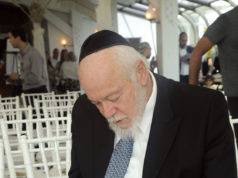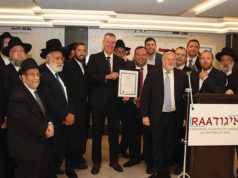
Iraqi Jews were famous for commerce throughout the Eastern Hemisphere. They sat at the crossroads of trade routes, buying and selling, and venturing abroad to procure merchandise. Wherever they traveled, they brought Judaism with them. They also established communities in Indonesia when the country was a Dutch colony. England, of course, cannot be forgotten. Iraqi traders established their own house of prayer in Brighton (1896).
What does an Iraqi shul look like? Elders sat in the center of the shul, and congregants sat along the sides. It rarely rains in Baghdad (average 6.1” per year compared with 47” in New York), so most of the buildings did not a roof. When it did rain, mats were placed to cover the opening and protect the building.
Shavuot 1941 will never be forgotten by Iraqi Jews, because a savage pogrom broke out in Baghdad, and almost 150 Jews were murdered and buried in a mass grave. Hundreds more were injured, and an extensive amount of Jewish property was destroyed. The heyday of the Jewish community was over.

The Jewish response was spontaneous; the Haganah (Shura) of Iraq was organized for self-protection. Jews realized that they were no longer safe nor welcome in Iraq.
Jews started to leave Iraq however they could. Many used passports with forged stampings and switched photographs.
Mass exodus to Israel came in Operation Ezra-Nechemiah during 1950-1951. Jews were allowed to leave Iraq with 50 dinars in cash and 15 kg. (33 lbs.) of property. They packed their things in metal suitcases, which reduced the amount of property they could take along with them, to protect against Iraqi officials who would often slice open cloth or leather suitcases to see if valuables were hidden inside.
After the Gulf War of 1991, Saddam Hussein ordered the burning of some 200 Sifrei Torah. The Iraqi military officer who received the order realized that the scrolls were worth money, and through Jordan he sold off 56 until his activities were discovered.
What remains in Iraq today? In 2007, Time Magazine reported an estimated seven Jews remain in the Baghdad area; and it is estimated that fewer than 100 Jews live in Iraq.



